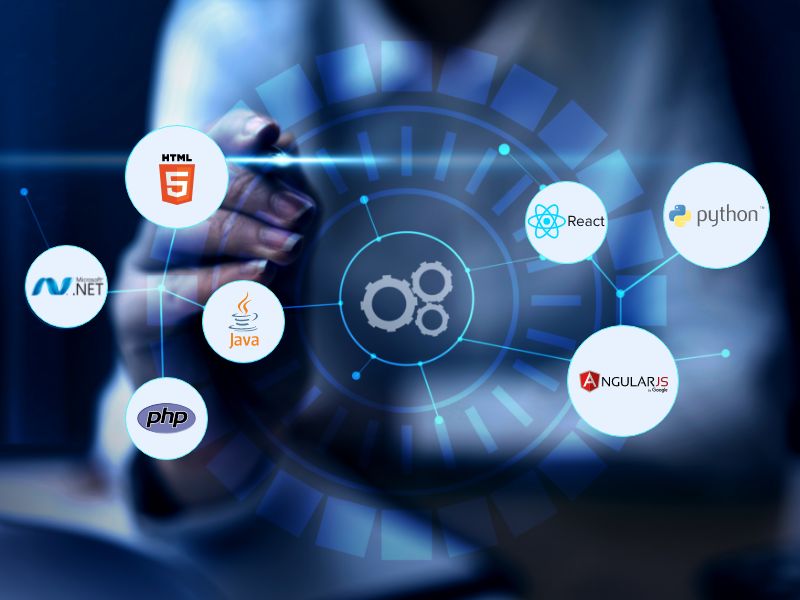The Importance of Selecting the Right Technology Stack for Data Integration Platform

Stuart Sackman, Executive Vice President of Product and Technology at MicroStrategy, once said, “Data integration is a critical component in turning data into value, and it must be done well to achieve success.” Choosing the appropriate technology stack can make data integration more efficient, secure, and scalable, allowing organizations to turn data into valuable insights and drive growth.
In today’s data-driven world, organizations are continuously seeking ways to integrate data from various sources to make informed decisions and gain a competitive edge. However, data integration can be a complex and challenging task, particularly when dealing with vast amounts of data from disparate sources.
According to a recent report by Grand View Research, the global data integration market size was valued at USD 10,534.0 million in 2021 and is expected to expand at a compound annual growth rate (CAGR) of 11.9% from 2022 to 2030. This indicates the increasing demand for data integration solutions across various industries.
And the right technology stack for a data integration platform can make all the difference, providing organizations with a range of benefits, including enhanced security, scalability, and user-friendliness. To learn more about this, let’s first get acquainted with the technology stacks required for data integration.
What are the Tech stack that Power Data Integration Platforms?
The technology stack for a data integration may differ depending on the organization’s individual needs and requirements. Nonetheless, the following technologies are often used in data integration platforms:
| Type | Techstack |
|---|---|
| Integration middleware | Apache Kafka, Apache NiFi, MuleSoft, and Talend. |
| Data storage and processing | Hadoop Distributed File System (HDFS), Apache Spark, and Amazon S3. |
| Cloud services | Amazon Web Services (AWS), Google Cloud Platform (GCP), and Microsoft Azure |
| APIs and web services | RESTful APIs and SOAP web services are commonly used in data integration platforms. |
| Data quality and governance | Apache Atlas, Talend Data Quality, and Informatica Data Quality. |
| Visualization and analytics | Tableau, Power BI, and QlikView. |
How the Right Technology Stack Can Make Data Integration Effortless
“The right technology stack can make all the difference when it comes to data integration. With the right tools in place, we can streamline our workflow, reduce maintenance efforts, and ultimately drive business success.” said Tom Johnson, COO of DEF Enterprises.
Having the right technology stack can have a significant impact. Here, we will discuss the importance of selecting the right technology stack for integration platforms and how it can benefit organizations.
- Don’t let your data integration fall behind
Imagine having the ability to process and analyze data at breakneck speeds, allowing your organization to make informed decisions faster than ever before. The right technology stack can make this a reality. With improved performance, organizations can seamlessly integrate data from multiple sources, and analyze it quickly and efficiently to uncover valuable insights.
And here’s a real-world success example demonstrating the value of a high-performing data integration techstack. Facebook, which processes massive amounts of data every day. Facebook’s data integration platform employs Apache Kafka as its messaging system, allowing for large-scale real-time data processing. This allows Facebook to swiftly collect and analyze data, delivering significant insights to the company and its advertisers in real-time. Facebook is able to keep ahead of the competition and innovate in the data-driven digital landscape due to its high-performing technology stack.
- The Sky’s the Limit
Acquiring the appropriate technology stack integration is like building a skyscraper that grows larger with each passing year. Organizations may effortlessly integrate data from a range of sources, including structured and unstructured data, databases, cloud storage, APIs, and legacy systems, with the ideal technology stack. This means that as the organization grows, the data integration will be able to keep up, handling the rising volume and complexity of data without sacrificing performance or stability.
- Adapt to changing business needs
Picking the right technology stack for a data integration can give firms the flexibility they require to flourish in today’s business market.
Netflix is an excellent example that used the correct technology stack to adapt to changing business needs. Netflix has made significant investments in establishing their own technological stack, which includes tools such as Apache Kafka, Apache Cassandra, and Elasticsearch, among others. This enabled them to better manage the huge amount of data.
So the perfect tech stack can give a chance to companies who offer top-rated custom software development services to gain competitive advantage and achieve their business objectives more efficiently by customizing the platform to specific use cases, adapting to changes in data sources, business processes, and trying out novel data-driven initiatives.
- Protect From Vulnerability to Invincibility:
With the increasing digitization, data integration has become critical for all businesses including leading cloud consulting company to optimize operations and promote growth. But, as more sensitive data is moved between systems, the need for security has never been stronger. That is why it is critical to choose the correct technology stack for your data integration platform.
Envision your data integration platform to be a fortress that protects your data from potential breaches and attacks. The technological stack you select is similar to the fortress’s wall: the stronger and more secure it is, the better protected your data will be. So you can ensure that your data is encrypted during transmission, authentication is secure, and access controls are properly managed with the right technological stack.
- Streamline Your Workflow
Dan Wright, CEO of DataRobot once said As businesses become increasingly data-driven, it’s critical that the technology stack powering data integration is easy to use for users at all levels of technical expertise. A user-friendly interface can help drive greater efficiency and productivity
When it comes to end- to end SaaS development services or data integration, a user-friendly interface can make all the difference. The right technology stack can provide just that. It allows users to interact with the platform in a way that is intuitive, efficient, and effective.
With a user-friendly interface, users can easily navigate through the integration process, connect to different data sources, and manage workflows without any technical expertise. This empowers users, from business analysts to data scientists, to work more efficiently and effectively, saving time and reducing errors.
The Final words
Selecting the right technology stack for a data integration platform is a crucial decision that can greatly impact the success of any organization’s data integration efforts. With the ever-increasing volume and complexity of data, it is imperative to have a platform that can efficiently handle the data and ensure smooth data flow. Choosing the right technology stack can ensure that the platform is scalable, flexible, and robust, allowing for seamless integration of various data sources. Therefore, investing time and effort in selecting the right technology stack is a strategic decision and if you also want to avail significant benefits then we at Finoit excel in providing data quality, business insights, and competitive advantage so connect with development team who can be your one stop solution.


